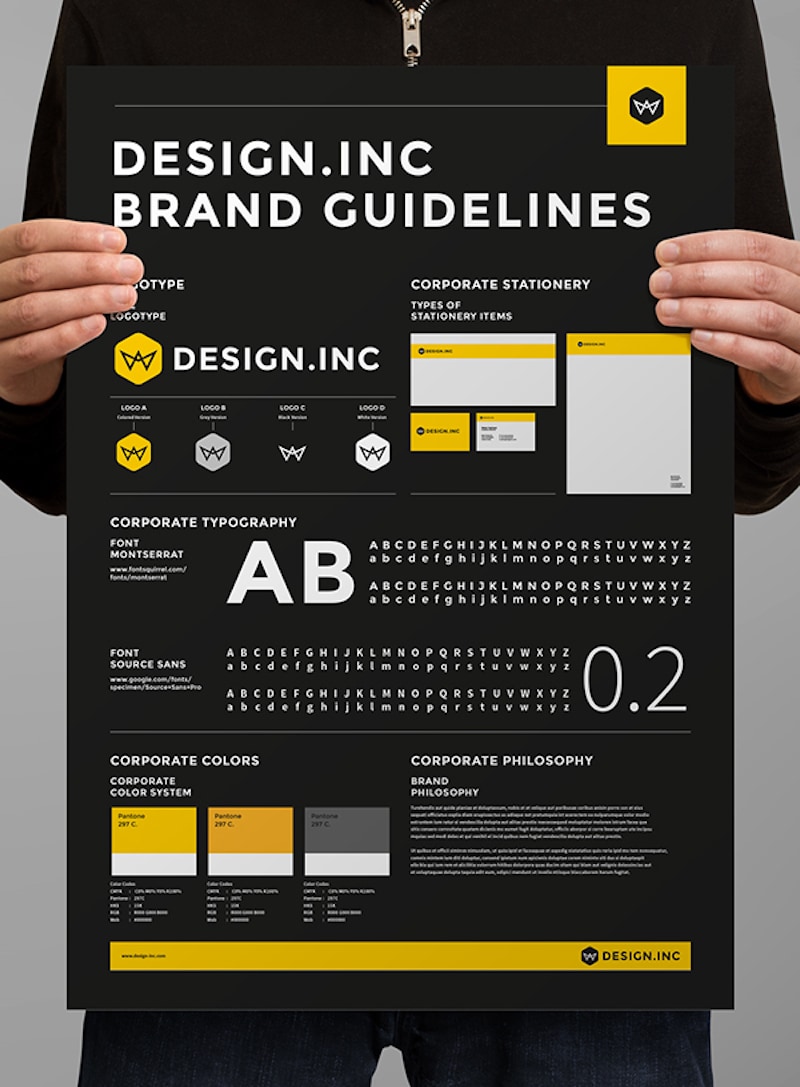Introduction to Shutterstock Logo Usage
The Shutterstock logo serves as a vital representation of the brand and its values. Proper usage of this logo is essential for maintaining brand integrity and recognition. This section outlines the foundational aspects of using the logo accurately, ensuring that designers respect its design elements and application contexts. Adhering to these guidelines not only enhances professionalism but also strengthens the overall brand identity across various platforms.
Importance of Following Logo Use Guidelines
Following the logo use guidelines provided by Shutterstock is crucial for several reasons:
- Brand Consistency: Maintaining consistency in logo application helps in creating a recognizable brand image across all media.
- Professionalism: Proper use reflects professionalism and careful attention to detail, which can influence stakeholder perceptions.
- Avoiding Misrepresentation: Incorrect logo usage can lead to misinterpretations of the brand’s message and values.
- Legal Standards: Adhering to these guidelines helps avoid any legal repercussions that might arise from incorrect usage.
In essence, these guidelines act as a protective measure for the brand while providing designers with the necessary framework to enhance their creativity within defined parameters. Understanding the specifics of logo size, color variations, spacing, and placement will enable designers to produce high-quality designs that uphold the standards of the Shutterstock brand. By respecting these requirements, designers contribute to a coherent visual identity that resonates with audiences and fosters brand loyalty.
Shutterstock Logo Variations Explained
Understanding the different variations of the Shutterstock logo is crucial for maintaining brand consistency in your designs. Shutterstock offers several logo formats to accommodate various applications. Here’s a breakdown of the primary variations:
- Full-Color Logo: This is the most vibrant version, designed for use on white or light backgrounds. It features the iconic red and gray hues that represent the brand.
- Black and White Version: When color isn’t an option, the black and white logo can be used effectively. It’s perfect for monochromatic designs where maintaining visual impact is essential.
- Reversed Logo: This variation is designed for instances where the logo is placed on dark backgrounds. It uses white and red elements to ensure visibility and coherence.
- Icon Only: Sometimes, less is more. The Shutterstock ‘S’ icon can be used independently for social media profiles or app icons, providing a strong brand mark even without the company name.
When selecting the appropriate logo variation, consider the context of your project. Always prioritize clarity and legibility, ensuring that whichever logo version you choose conveys the Shutterstock brand effectively. Avoid modifying any logos or creating new variations, as this can dilute the brand identity.
Proper Color Usage for the Shutterstock Logo
Color is a powerful component of the Shutterstock brand identity. Using the right colors not only showcases the brand but also ensures consistency across different platforms. Here’s how to use color correctly for the Shutterstock logo:
| Color | Hex Code | Usage |
|---|---|---|
| Shutterstock Red | F20000 | Main logo color, used for the logo text on light backgrounds. |
| Shutterstock Dark Gray | 4B4B4B | Secondary text or logo color, creating a sophisticated contrast. |
| White | FFFFFF | Used in the reversed logo and for high-contrast applications. |
When integrating the Shutterstock logo into your designs, ensure that the colors remain true to the specified hex codes. Avoid altering the color saturation or brightness as this can compromise the brand’s recognizable appearance. Maintaining the integrity of these colors across all your designs will strengthen the overall brand identity of Shutterstock and reinforce its professionalism in the market.
Clear Space Requirements Around the Logo
When using the Shutterstock logo, maintaining clear space around it is crucial for ensuring that it stands out and remains easily recognizable. This clear space acts as a buffer to prevent distractions from other elements in your design, helping to preserve the logo’s integrity and impact.
To determine the proper amount of clear space, follow these simple guidelines:
- The clear space should be equal to the height of the logo’s “S” character.
- All sides of the logo should have this amount of clear space, meaning that the space should be consistent around the entire logo.
- Make sure no other text, images, or graphic elements infringe upon this clear area.
Using these guidelines, you can effectively enhance the visibility of the Shutterstock logo. Not only does this practice help in maintaining a professional appearance, but it also underscores the brand’s commitment to strong visual identity.
Remember, a well-placed logo that adheres to clear space requirements can elevate your design and provide a polished, cohesive look, reflecting positively on both the brand and your skills as a designer.
Incorrect Uses of the Shutterstock Logo
Even the most talented designers can sometimes inadvertently misuse a logo. To help you avoid common pitfalls with the Shutterstock logo, let’s outline some incorrect uses that should be strictly avoided:
| Incorrect Use | Description |
|---|---|
| Stretching or Distorting | Never alter the proportions of the logo. The logo must always maintain its original dimensions. |
| Changing Colors | Stick to the official color palette. Do not apply custom colors that deviate from the established brand colors. |
| Adding Effects | Avoid adding shadows, gradients, or other effects. The logo should remain flat and clear. |
| Overlaying Text | Do not place any text over the logo, as this can clutter the design and obscure the brand. |
| Incorrect Logo Placement | Avoid placing the logo in corners or cramped areas where it may not receive proper attention. |
By steering clear of these incorrect uses, you’ll not only uphold the brand’s values but also demonstrate your respect for its identity. Always aim to represent the logo in a way that aligns with the Shutterstock vision, showcasing your professionalism while ensuring the logo’s strength and clarity remain intact.
Best Practices for Logo Application in Design
When incorporating the Shutterstock logo into your designs, following best practices can enhance brand consistency and ensure a professional aesthetic. Here are some key guidelines to keep in mind:
- Maintain Clear Space: Always give the logo ample breathing room. The clear space around the logo should be at least equal to the height of the logo itself. This prevents other visual elements from crowding the logo and ensures it remains the focal point.
- Use Correct Color Variants: The Shutterstock logo comes in various color options, including full color, black, and white. Select the color scheme that best aligns with your design while ensuring the logo remains legible against the background.
- Consistent Scaling: Avoid altering the logo’s proportions. When resizing, ensure the aspect ratio stays intact to prevent any distortion.
- Avoid Busy Backgrounds: When placing the logo, make sure the background is not overly complicated. A simple, solid color or a subtle pattern works best to maintain visibility and impact.
- Use High-Quality Files: Always use high-resolution files of the logo to avoid pixelation or blurriness. This is particularly important for print materials.
Remember, the way you apply the Shutterstock logo reflects not only your design skills but also your professionalism and respect for the brand. Keeping these practices in mind will help convey the right message through your visuals.
Case Studies of Effective Shutterstock Logo Usage
Understanding how to effectively use the Shutterstock logo can be better grasped through real-world examples. Here are a couple of case studies showcasing successful logo application:
Case Study 1: Marketing Campaign for a Startup
A startup decided to launch a marketing campaign that included social media advertisements, brochures, and merchandise. They used the Shutterstock logo as follows:
- In ads, the logo was placed on a muted background to stand out, following best practices regarding clear space.
- On brochures, the logo was used in both full color and black-and-white versions, depending on the background color of each page.
- Merchandise items, like tote bags, featured the logo prominently to reinforce brand recognition.
Case Study 2: Corporate Presentation
A corporate presentation involved a rebranding effort that utilized the Shutterstock logo in a compelling and cohesive manner:
- The logo was integrated into slide headers to maintain a consistent visual theme throughout.
- Each slide included the logo in the bottom right corner, ensuring it was visible without distracting from the content.
- High-resolution vector formats were used to ensure clarity, even on large presentation screens.
These case studies highlight how thoughtful application of the Shutterstock logo can enhance both brand identity and audience engagement. Following these examples, you can create designs that not only look good but also respect the Shutterstock brand guidelines.
Resources for Designers Working with Shutterstock
As a designer, having the right resources at your fingertips can make all the difference when working with the Shutterstock logo. Luckily, Shutterstock provides a variety of tools and materials to ensure that you can utilize their branding effectively and appropriately. Here are some valuable resources to consider:
- Brand Guidelines PDF: Shutterstock offers a comprehensive PDF that outlines all the essential brand guidelines. This document includes information on logo specifications, color palettes, and typography. It’s a must-read before you start any design project.
- Downloadable Logos: Access high-resolution logos in different formats (JPEG, PNG, SVG) through their resource center. Always ensure you’re using the correct version that meets the specific requirements of your project.
- Design Templates: Shutterstock provides pre-made templates that can help you incorporate their logo seamlessly into various designs, from social media posts to print materials.
- Customer Support: If you’re ever unsure about logo usage or need clarification on any guidelines, Shutterstock’s support team is just a message away. Don’t hesitate to reach out for assistance.
- Community Forums: Engaging in forums where fellow designers share their experiences can provide insights into best practices. Look for discussions specifically about working with Shutterstock’s branding.
Utilizing these resources will not only help you stay compliant with Shutterstock’s guidelines but also enhance the overall quality of your designs. Remember, keeping their brand’s integrity intact is paramount, and these tools will aid you immensely in that effort.
Conclusion and Final Thoughts on Logo Usage
Using the Shutterstock logo correctly is crucial for maintaining the company’s brand identity and ensuring that your designs align with their standards. Whether you’re creating promotional material, integrating the logo into a product, or developing a visual campaign, adhering to the brand guidelines can enhance your work’s professionalism.
Here are a few final thoughts to consider:
- Consistency is Key: Always use the logo consistently across all platforms and materials to reinforce brand recognition.
- Adapt Responsibly: While creativity is encouraged, any alterations to the logo should only be made within the parameters set by Shutterstock’s guidelines. Misuse can dilute the brand’s integrity.
- Stay Updated: Brand guidelines can evolve, so it’s important to revisit Shutterstock’s official resources regularly to stay informed about any updates or changes.
- Respect Copyright: Remember that the logo is a trademarked asset. It’s essential to respect copyright laws and use the logo only as prescribed.
By following these guidelines and utilizing available resources, you empower your designs and contribute to a strong, cohesive brand image for Shutterstock. Happy designing!


